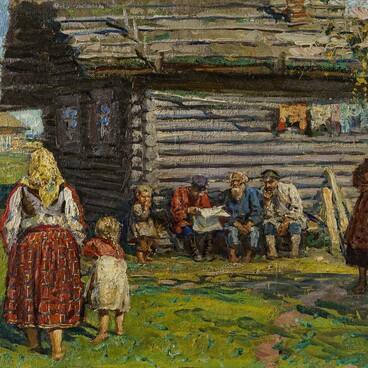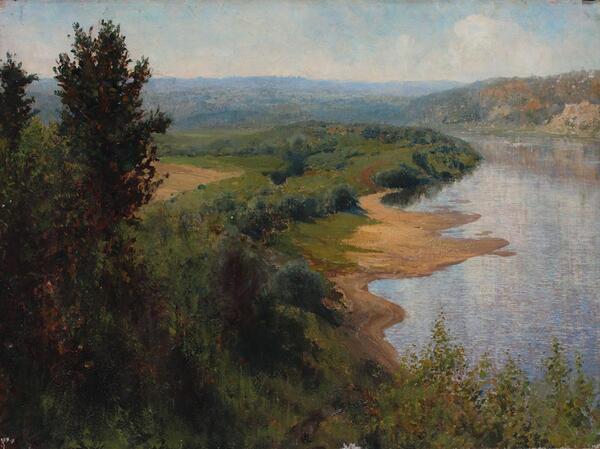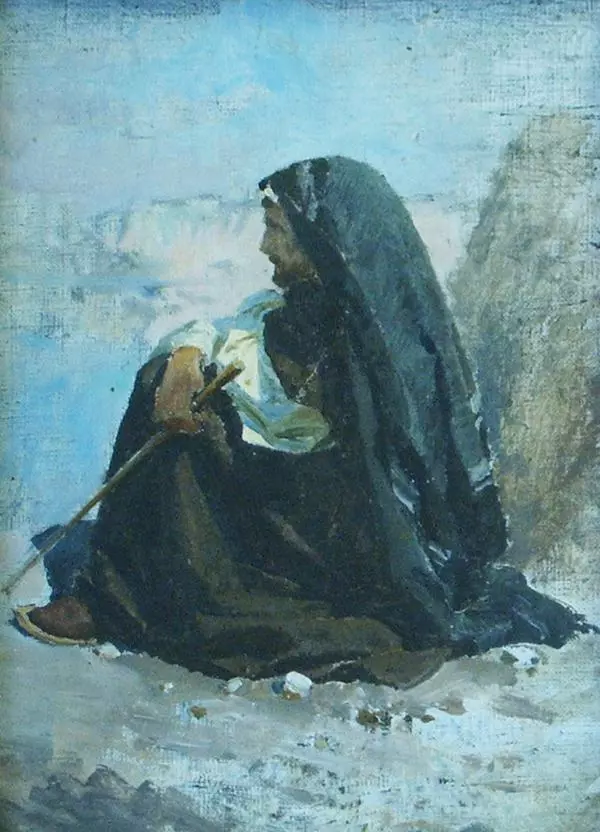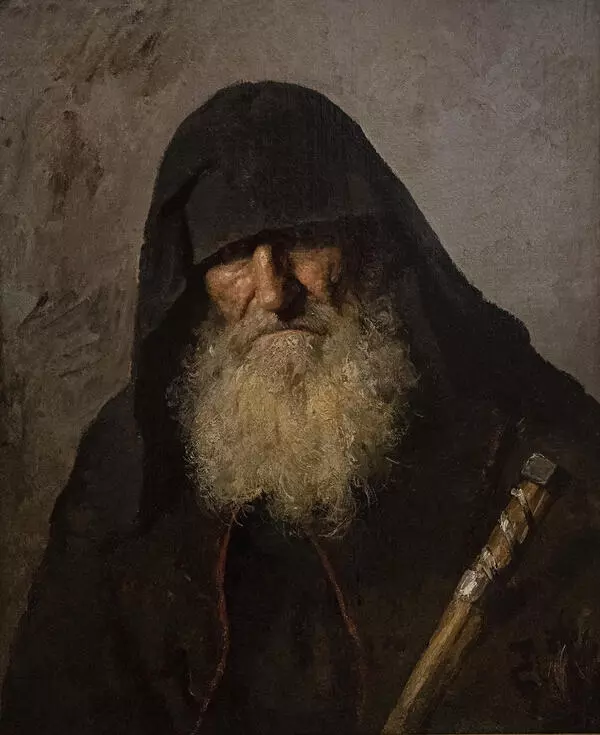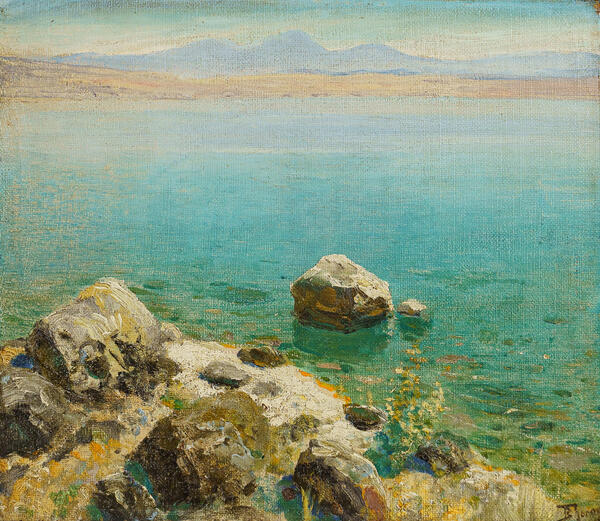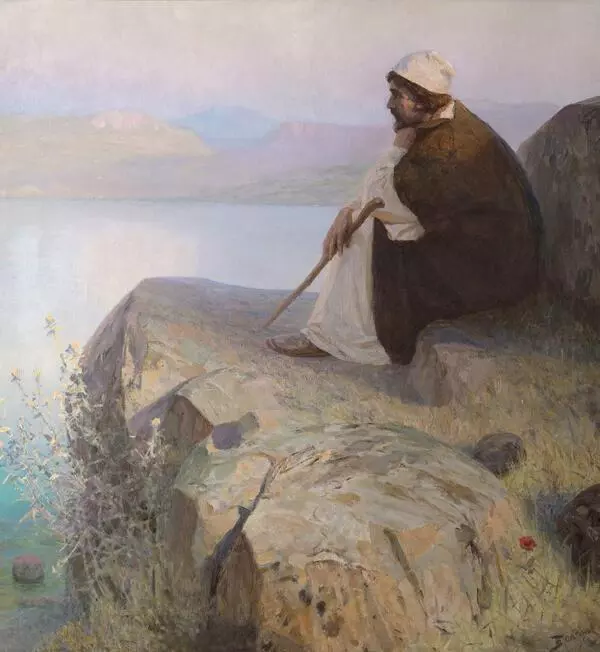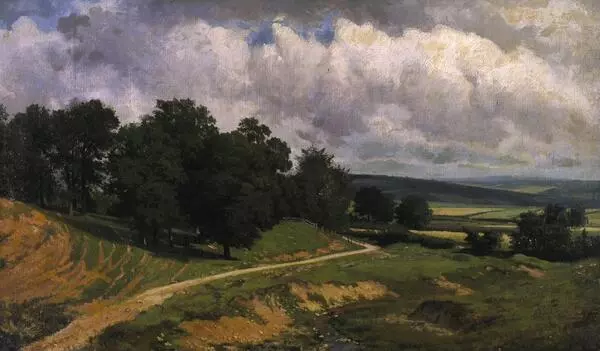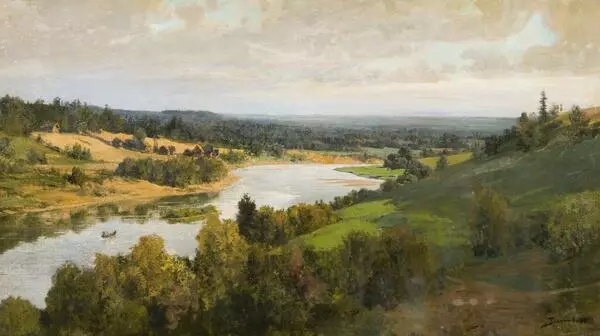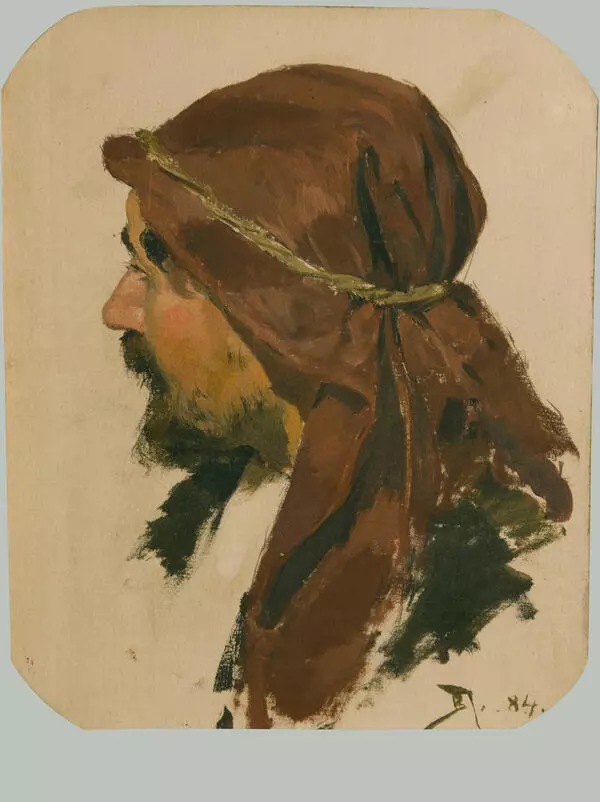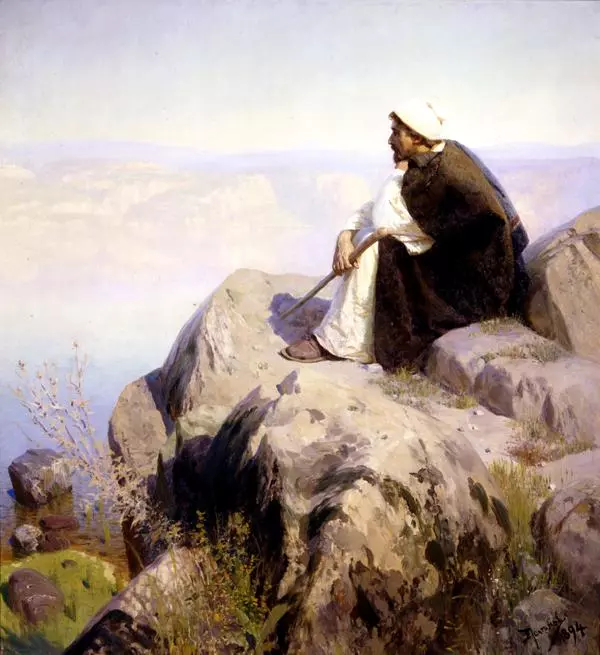After a long exhausting process of working on a series of paintings about the life of Jesus Christ, Vasily Polenov dreamed of seeing the Oka River by cruising down it from Serpukhov to Aleksin. He wanted to find some nice place where he could live with his family and work in peace.
Boats on the Oka
When we have an estate, I will certainly become a hunter, though a bad one, but still a hunter. Hunting is much healthier and more invigorating than painting. One must necessarily shake off physically to be mentally healthy. Working the land in the village will calm our frayed nerves and help us regain our strength, I’m sure.
In the spring of 1888, the artist came across an old estate that belonged to the landowner named Sablukova. Next to her estate, there was an old wooden church, and further away was the village of Byokhovo. A year later, Polenov managed to purchase the land, and finally he and his family moved to the estate.
The construction of the estate on the picturesque bank of the Oka River allowed the artist to reveal a few of his other talents. There, Polenov painted pictures, composed music, planted trees in the park, built a dam, and helped make boats. Naturally vigorous, he engaged in solving the problems of public education. Polenov established two schools in the surrounding villages.
Vasily Polenov loved the Oka River and his estate with all his heart — the local peasants called the place Borok. When the artist passed away, the estate was renamed Polenovo. Vasily Polenov’s name is inextricably linked with the Tula region: there, on the bank of the Oka, he lived and worked for over 30 years, tirelessly changing the lives of his fellow villagers for the better.


